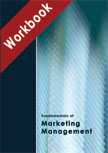Rebranding Union Bank of India
|
|
ICMR HOME | Case Studies Collection
To download Rebranding Union Bank of India
case study
(Case Code: MKTG285) click on the button below
, and select the case from the list of available cases:


» Marketing Case Studies
» Marketing Management Short Case Studies
» View Detailed Pricing Info
» How To Order This Case
» Business Case Studies
» Case Studies by Area
» Case Studies by Industry
» Case Studies by Company
Please note:
This case study was compiled from published sources, and is intended to be used as a basis for class discussion. It is not intended to illustrate either effective or ineffective handling of a management situation. Nor is it a primary information source.
Chat with us

Please leave your feedback

|




Case Details:
|
Price: |
| Case Code |
: |
MKTG285 |
For delivery in electronic format:
Rs. 500;
For delivery through courier (within India): Rs. 300 + Shipping & Handling Charges extraThemes
Rebranding /
Corporate Rebranding
|
| Case Length |
: |
10 Pages |
| Period |
: |
2008-2009 |
| Pub Date |
: |
2012 |
| Teaching Note |
: |
Not Available |
| Organization |
: |
Union Bank of India |
| Industry |
: |
Banking |
| Countries |
: |
India |
Abstract:
|
This case study is about the rebranding exercise adopted by the Union Bank of India as part of its 'Nav Nirman' initiative. This involved a change in the bank's logo and repositioning Union Bank as a customer friendly and modern techno-savvy bank in India. The case also studies the role of the media campaign in this exercise. The bank decided to change its logo to represent the customer friendliness and technological advancements in its operations in September 2008. It contended that the change of logo and the media campaign to communicate the change would result in an increase in its customer base and more profit by creating satisfaction and loyalty among customers.
|
|
However, some marketing experts viewed this entire episode as having the potential for brand dilution as they did not see any need for such a rebranding exercise. This case is meant for MBA/BBA students as a part of the Brand Management/ Marketing Communication curriculum.
Issues:
The case will help the students:
» Understand the issues and challenges in changing an already established brand (new brand name or logo, rebranding)
» Understand the importance and role of the media in integrated marketing communication.
» Understand how the positioning of an existing brand can change with the successful implementation of integrated marketing communication strategies.
» Discuss and debate whether change of an existing brand name or logo or a brand extension is a good move by an established brand like Union Bank of India.
Contents:
Keywords:
Branding, Rebranding, Corporate rebranding, Logo, Integrated marketing communication, Marketing communication, Banking, Union bank of India, Axis Bank, HDFC Bank, ICICI Bank, SBI
Introduction of a New Logo: Nav Nirman...
- Next Page>>
|
|







